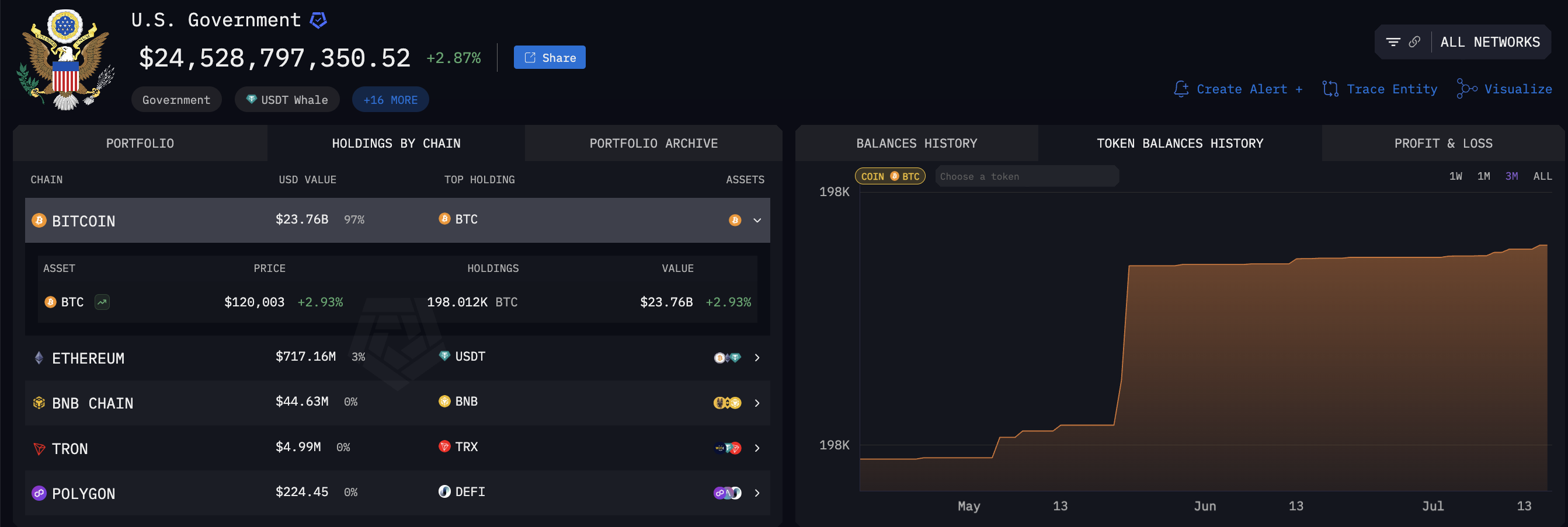-
Recent FOIA disclosures reveal the US government holds only 28,988 BTC, significantly less than previously assumed, sparking debate over actual government Bitcoin ownership.
-
While federal agencies report custody of 200,000 BTC, much of this consists of seized assets not legally owned by the government, complicating the narrative around government-held Bitcoin reserves.
-
According to COINOTAG sources, on-chain analysis confirms no large-scale liquidation of government Bitcoin holdings, dispelling fears of a covert sell-off under President Biden’s administration.
FOIA documents clarify US government Bitcoin holdings at 28,988 BTC, highlighting the distinction between seized and forfeited assets amid concerns of a potential sell-off.
Clarifying US Government Bitcoin Holdings: What the Numbers Really Mean
The US government’s Bitcoin holdings have long been a subject of speculation, fueled by years of asset seizures from criminal investigations. However, recent FOIA disclosures provide a clearer picture, revealing that the US Marshals Service currently holds only 28,988 BTC, valued at approximately $3.47 billion, which is just 15% of the previously assumed total.
This figure contrasts sharply with the often-cited 200,000 BTC reportedly held by various federal agencies. The discrepancy arises because many of these bitcoins are seized assets, which remain in legal limbo and are not considered government property until forfeiture proceedings conclude. This nuance is critical for understanding the true extent of government Bitcoin ownership and its potential market impact.
The revelation triggered concern within the crypto community, especially given last year’s global trend of government Bitcoin liquidations and speculation about President Biden’s administration possibly conducting undisclosed sales. Yet, on-chain data from firms like Arkham Intelligence show no evidence of large-scale liquidation, suggesting that fears of a secret sell-off are unfounded.
On-Chain Analysis Debunks Sell-Off Speculation
Arkham Intelligence’s detailed tracking of Bitcoin transactions attributed to government wallets reveals stable holdings without significant outflows. This transparency is vital in dispelling rumors and maintaining market confidence. Intraledger movements may slightly affect the total custody figures, but the absence of large transfers to exchanges or other wallets indicates no major sell-off has occurred.
Such data-driven insights emphasize the importance of relying on verifiable blockchain analytics rather than speculative narratives. This approach helps investors and policymakers alike to gauge the government’s Bitcoin position accurately and anticipate future developments with greater certainty.

US Government Bitcoin Holdings. Source: Arkham Intelligence
Seized vs. Forfeited Bitcoin: Legal Ownership and Market Implications
Understanding the distinction between seized and forfeited Bitcoin is essential when evaluating the government’s crypto assets. Forfeited bitcoins are those legally transferred to government ownership following court rulings, granting agencies full authority to manage or liquidate these assets. The 28,988 BTC held by the US Marshals Service fall into this category.
Conversely, seized bitcoins are held temporarily during investigations but remain the property of the original owners until forfeiture is finalized. This category includes approximately 94,000 BTC linked to the Bitfinex hack, which law enforcement currently holds but may ultimately return to creditors. This potential restitution significantly reduces the government’s effective Bitcoin reserves.
This legal nuance impacts strategic initiatives like former President Trump’s proposed Strategic Bitcoin Reserve, which envisioned leveraging government-held BTC as a national asset. Given that a substantial portion of the bitcoins are seized rather than forfeited, the Reserve’s actual holdings and influence on the market are considerably less than initially projected.
Implications for Future Government Bitcoin Strategy
With the US government’s confirmed forfeited Bitcoin holdings valued at $3.47 billion, policymakers face challenges in managing these assets responsibly. The distinction between custody and ownership necessitates careful legal and strategic considerations, especially as the government navigates potential sales or retention of these digital assets.
Moreover, transparency and clear communication about Bitcoin holdings are crucial to maintaining trust among investors and the broader public. As the crypto ecosystem evolves, the government’s role as a significant Bitcoin holder will continue to attract scrutiny, underscoring the need for precise reporting and adherence to regulatory frameworks.
Conclusion
The recent FOIA disclosures provide much-needed clarity on the US government’s Bitcoin holdings, revealing that actual ownership is far less than previously assumed due to the legal status of seized versus forfeited assets. On-chain data confirms no large-scale sell-off has occurred, alleviating market fears of a covert liquidation under President Biden’s administration. Moving forward, understanding these distinctions is vital for assessing the government’s influence on the Bitcoin market and the viability of strategic reserves. Stakeholders should monitor developments closely, relying on transparent data and legal insights to navigate this complex landscape.
